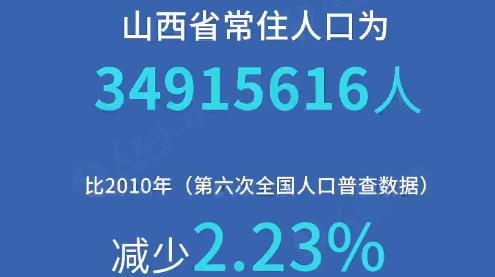Promoting industrial transformation to diversify Shanxi's economic operations from coal mining to multiple sectors to foster new growth engines has been a major focus of development over the past five years and will be highlighted in the years to come, delegates agreed during the recent two sessions of the provincial legislative and political advising bodies.
The two sessions-the fourth session of the 13th Shanxi People's Congress and the fourth session of the 12th Shanxi Committee of the Chinese People's Political Consultative Conference-were held in Taiyuan from Jan 19-23.
Li Yajuan, a deputy to the Shanxi People's Congress and board chairwoman of Jinhui Zhaolong High Tech based in Lyuliang city, said she that "transformation" was one of the keywords at the two sessions, as it was mentioned 29 times in the government work report delivered by Shanxi Governor Lin Wu on Jan 20.
"I was especially excited with the economic performance in 2020. The province's GDP growth of 3.6 percent was reported for the year despite the COVID-19 pandemic,"Li said. "The result was achieved thanks to the industrial transformation over the years."
The four traditional economic pillars of coal mining, coking, metallurgy and coal-fired electricity generation are the major battlefields for this transformation, said Wang Mingsheng, a deputy to the congress and chief of the commission of development and reform in the northern Shanxi city of Datong.
Shanxi is using new technologies to upgrade its traditional industries, while fostering emerging industrial sectors, the deputy noted.
Wang said the transformation will also benefit Shanxi's environment while improving the local economy.
"The government work report proposed the Shanxi Action Plan for carbon dioxide reduction, which requires a complete turnaround in carbon dioxide emissions by 2030," Wang said.
As a coal-rich city, Wang said Datong will play an important role in this transformation.
"Our measures for the transformation include upgrading the coal-mining industry with new technologies for the purposes of improving efficiency and reducing emissions; developing new and clean energy resources such as solar and wind energies and natural gas; and fostering new industries including advanced manufacturing and modern pharmaceuticals," Wang said.
Liu Wei, a deputy to the congress and Party secretary of Taigu district in Jinzhong city, said Shanxi's transformation strategy will give more opportunities for cross-industry integration.
The official noted that Taigu is developing an industrial park for the integration of agriculture-related industries, called the Shanxi Agro-Industry Valley.
"In the valley, we are developing an extended industrial chain that covers farming, crop research, food processing and biomedicine production based on local medical herbs," Liu said.
Li Yali contributed to this story.
By YUAN SHENGGAO
 山西路橋:黨建引領 建好“四好農村路”山西路橋建設集團黨委扎實開展“黨建質量提升年”,實施“六大工程”,立足“十四五”高質量、高速度、高效益發展的戰略基點,全面提高黨建質量和黨建引領發展水平,為打造“國內一流的交通基礎設施投資、建設、施工現代化企業集團”提供堅強政治保障。
山西路橋:黨建引領 建好“四好農村路”山西路橋建設集團黨委扎實開展“黨建質量提升年”,實施“六大工程”,立足“十四五”高質量、高速度、高效益發展的戰略基點,全面提高黨建質量和黨建引領發展水平,為打造“國內一流的交通基礎設施投資、建設、施工現代化企業集團”提供堅強政治保障。
 常住人口3491萬 山西人口普查數據"出爐"山西省統計局向社會通報山西省第七次全國人口普查主要數據。數據顯示,山西省常住人口為34915616人,比2010年(第六次全國人口普查數據,下同)減少2.23%,年平均減少0.23%。山西省常住人口總量減少,主要受人口流動變化等因素影響。
常住人口3491萬 山西人口普查數據"出爐"山西省統計局向社會通報山西省第七次全國人口普查主要數據。數據顯示,山西省常住人口為34915616人,比2010年(第六次全國人口普查數據,下同)減少2.23%,年平均減少0.23%。山西省常住人口總量減少,主要受人口流動變化等因素影響。